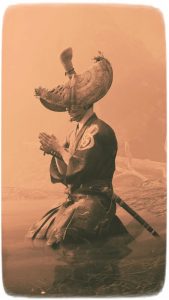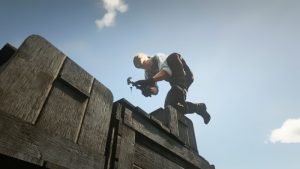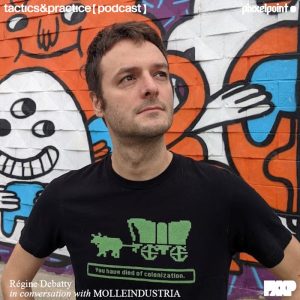Notes from Steffen Walz‘s talk at Game, Set and Match II: A Spatio-Ludic Rhetoric: Serious Pervasive Game Design for Sentient Architectures.
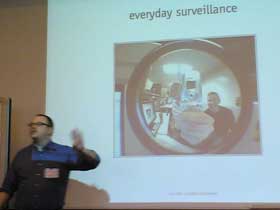
Dialectics of surveillance fun. Surveillance technologies are sine qua non components of our everyday life conditions. To what degree could serious pervasive games bring upon us an invisible system of technocontrol that would use the positive side of game. Turning our world into a “fun prison.”
The game could consist in trying to avoid surveillance camera using a map of the location of the CCTV cams or trying to be detected by as many as possible. One way to look at pervasive games as a form of counter surveillance or sousveillance or inverse surveillance (using surveillance to make something new.)
Exemple: New York Surveillance Camera Players.
Serious pervasive games follow rules set outside the game itself (war, policy, marketing, health, etc.). The game moves beyond the computer screen and people have to behave accordingly to the rules of the games. It’s more fun because you’re outside, in the normal world and you can impersonate another character: But upon you is surveillance architecture.
A whole nation can be turned into a game space.
Walz the showed a series of projects he has worked on.
– his students repurposed a cloister into a war zome with players running around the space to conquer territory using a tag shooter.
– REXplorer (PDF presentation) in Regensburg, Germany best preserved city. Part of the Regensburg experience, the spell-casting game uses location-based technologies and gesture recognition and it will turn the whole city into a huge playboard.
In the game, landmarked buildings have locked magical spirits, secrets, and treasures inside of them, all of which can be unleashed and interacted with by the way of the proper magical spell gesture, called “cellcast”. Tourists rent a magic”wand”, a gesture sensing and location tracking mobile phone running custom software and data neccessary for the game. As if taking a positionable, Nintendo Revolution controller with built-in loudspeaker outdoors, players learn about the history of the city by interacting with the buildings themselves, but also by duelling with one another, or fulfilling cooperative quests. Game will be launched in August 2006.
– M.A.D.Control Players use PDAs on a wireless network to solve clues and find and deactivate a bomb hidden in a building. In addition to the real-world physical floors of the building, there’s a “virtual floor”; player activity crosses back and forth between the real setting and the virtual one.
– Lightfight uses biofeedback hardware in combination with the redhell. Wearable biofeedback and IP enabled room functionnality and psychophysiology. The redhell acts as the display unit giving the player a feedback on the current gamestate.
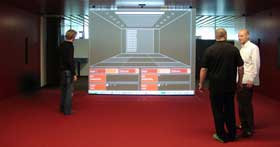
In the single player version one player connected to the lightstone competes against the computer personified by redhell. Standing at the far end of the room the player has to try to push the illuminated rows of neonlights towards the other end -applying force by raising his skinconductivity- while the redhell pushes in the opposite direction. During the course of the game the force with which the redhell pushes the light towards the player constantly increases. Once the illuminated row of neonlights has reached the players end of the room the game is over.
The fingerclip-sensors of the Hardware measure heartdata and the skinconductivity.
(via)
– educational game: “Who’s afraid of the Black Man” played in Stuttgart with semacodes, camera phones, GPRS, online multiplayer application.
– policy: “Spirits of Split” uses the Croatian city and real actors to represent real layers of the historical city,
– fundraising game to help ETH to fundraise money. People would buy one pixel of a huge billboard and over time the ETH logo would appear on the billboard.

